- Cypress: Growing, Propagation, Species, and Varieties
- Growing Cypress
- Propagation of Cypress
- Species and Varieties of Cypress
- Understanding the Growth of Cypress Trees
- 1. Environmental Conditions
- 2. Growth Rate
- 3. Height and Spread
- 4. Root System
- 5. Pruning and Maintenance
- 6. Disease and Pest Control
- 7. Lifespan
- 8. Uses
- Propagating Cypress: Methods and Techniques
- 1. Seed Propagation
- 2. Cuttings
- 3. Grafting
- Popular Cypress Species
- Varieties of Cypress Trees
- 1. Leyland Cypress (Cupressus x leylandii)
- 2. Arizona Cypress (Cupressus arizonica)
- 3. Italian Cypress (Cupressus sempervirens)
- 4. Bald Cypress (Taxodium distichum)
- 5. Hinoki Cypress (Chamaecyparis obtusa)
- Best Growing Conditions for Cypress
- Caring for Cypress Trees: Tips and Guidelines
- 1. Watering
- 2. Soil
- 3. Fertilization
- 4. Pruning
- 5. Mulching
- 6. Protection
- 7. Disease and Pest Control
- Common Pests and Diseases Affecting Cypress Trees
- Pests
- Diseases
- Questions and Answers:
- What is Cypress?
- How tall does Cypress tree grow?
- What are some popular species of Cypress?
- How can Cypress be propagated?
- What are the ideal growing conditions for Cypress?
- Are there any special care tips for growing Cypress?
- What are some popular varieties of Cypress?
- Videos: Leyland Cypress Plant Propagation From Cuttings
Cypress trees are popular for their beauty and versatility. They are known for their tall, slender trunks and feathery green foliage, which adds an elegant touch to any landscape. Cypress trees can be found in various species and varieties, each with its own unique characteristics and growth requirements.
Growing cypress trees can be a rewarding experience, but it’s important to understand their specific needs. Most cypress trees thrive in moist, well-draining soil and prefer full sun to partial shade. They are generally hardy and can tolerate a wide range of climates, from hot and humid to cool and dry.
Propagation of cypress trees can be done through both sexual and asexual means. Sexual propagation involves collecting seeds from mature cones and germinating them under controlled conditions. Asexual propagation, on the other hand, involves techniques such as cuttings, layering, and grafting, which produce clones of the parent plant.
There are several species of cypress trees, including the popular Leyland cypress, which is known for its fast growth rate and dense foliage. Other common species include the bald cypress, hinoki cypress, and Arizona cypress. Each species has its own unique growth habits, foliage color, and adaptability to different climates.
Within each species, there are also various varieties and cultivars that offer different characteristics and aesthetic appeal. Some varieties may have variegated foliage, while others may have weeping or columnar growth habits. It’s important to research and select the right variety for your specific needs and climate conditions.
Tip: When choosing a cypress tree for your landscape, consider its mature size and growth habits. Some varieties can grow to be quite large, while others stay compact and manageable.
Cypress: Growing, Propagation, Species, and Varieties
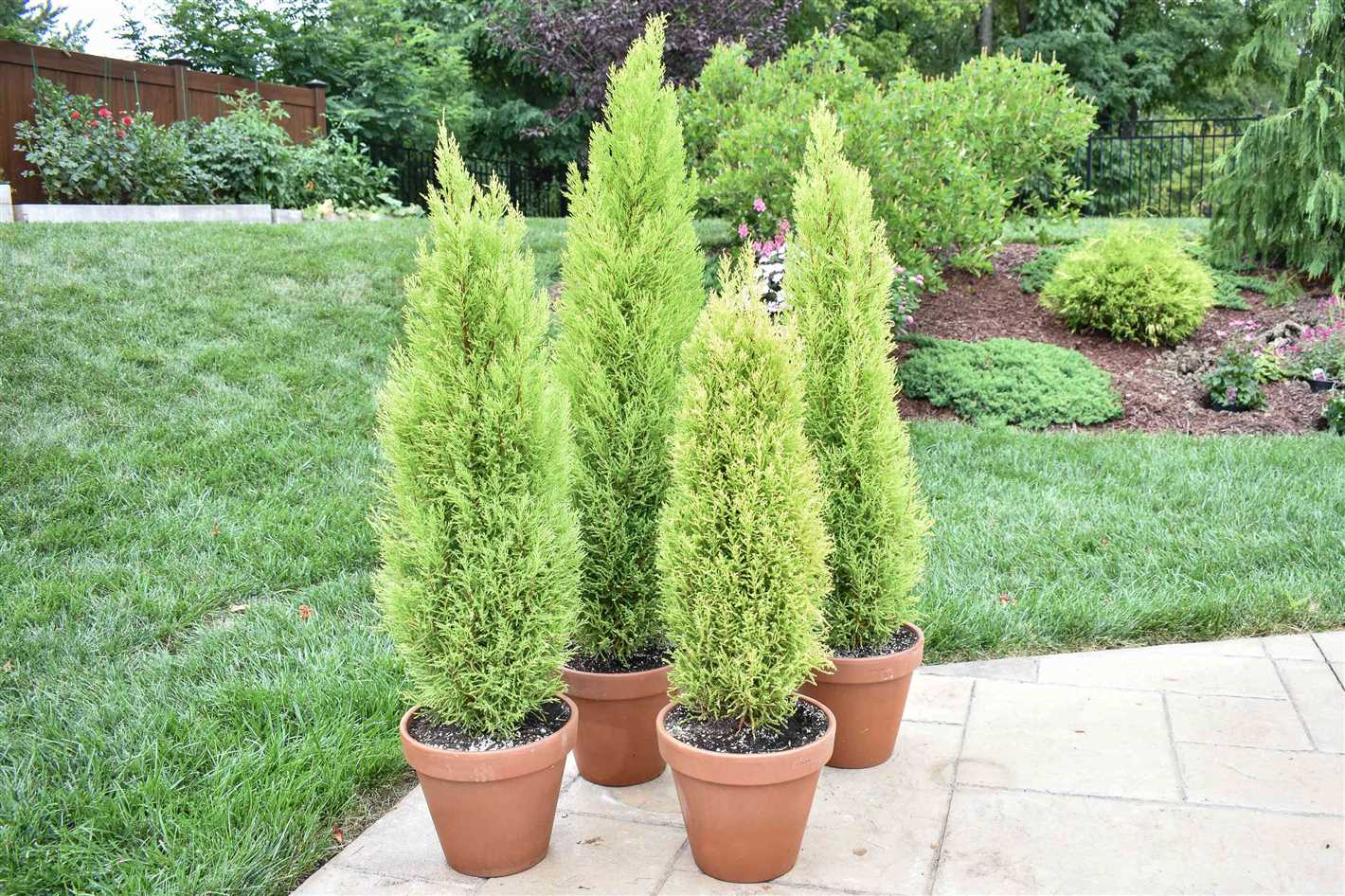
Growing Cypress
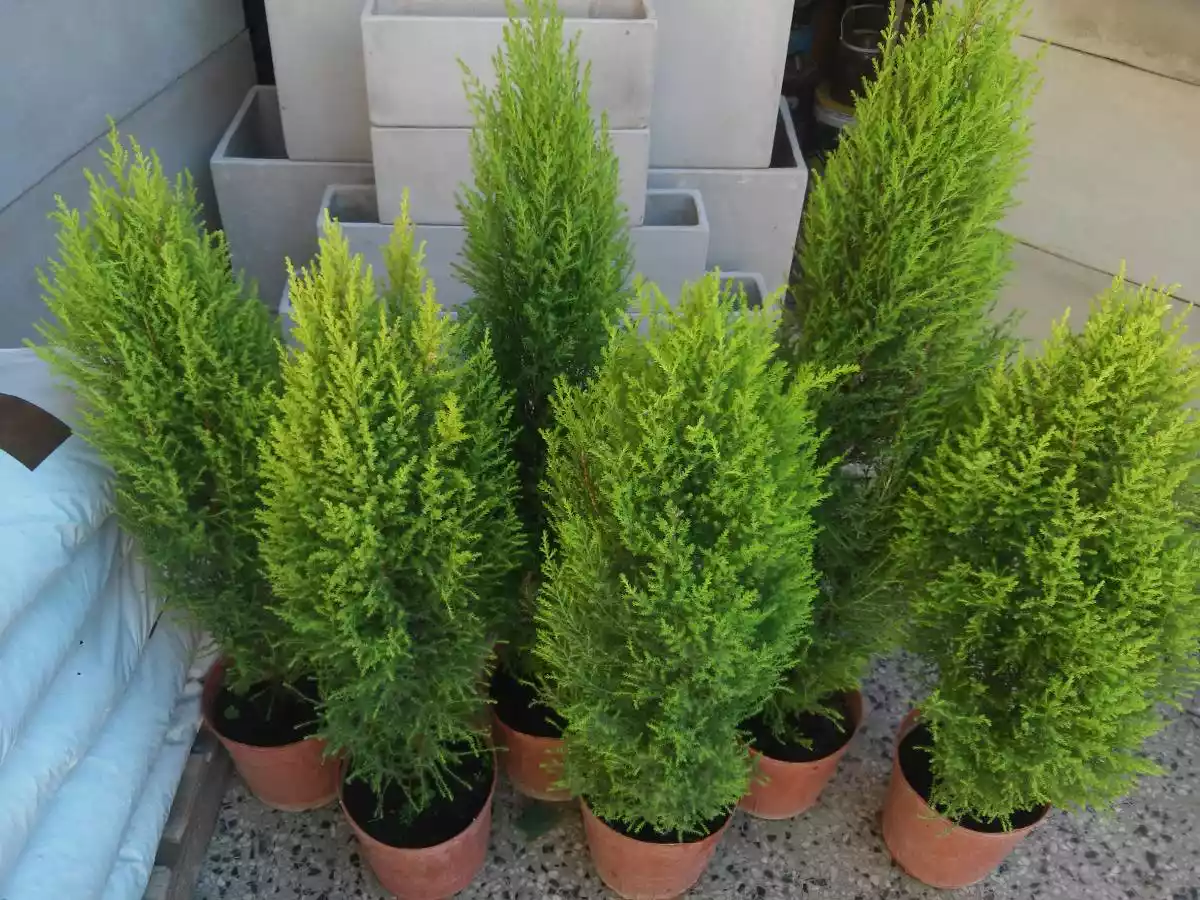
Cypress trees are known for their tall and slender appearance, making them an excellent choice for creating privacy barriers, windbreaks, or ornamental trees in landscapes. To grow cypress trees successfully, follow these tips:
- Choose a well-draining soil with a pH level between 6.0 and 8.0.
- Plant cypress trees in an area that receives full sun to partial shade.
- Water newly planted cypress trees regularly until they establish their root systems.
- Maintain a consistent watering schedule, ensuring the soil remains moist but not waterlogged.
- Fertilize cypress trees in the spring using a balanced slow-release fertilizer.
- Prune cypress trees to shape them and remove any dead or damaged branches.
Propagation of Cypress
The most common method of propagating cypress trees is through seed germination. Here’s how you can propagate cypress trees:
- Collect mature cones from the cypress tree.
- Place the cones in a paper bag and store them in a warm location for several weeks to allow them to dry.
- Once the cones have dried, shake them gently to release the seeds.
- Sow the seeds in a well-draining seed-starting mix, burying them about ¼ inch deep.
- Keep the soil consistently moist and place the container in a warm location with indirect sunlight.
- The seeds should germinate within a few weeks, and you can transplant the seedlings once they have developed a few sets of true leaves.
Species and Varieties of Cypress
There are several species and varieties of cypress trees available, each with its own characteristics and uses. Here are some popular ones:
| Species/Variety | Characteristics | Common Uses |
|---|---|---|
| Italian Cypress (Cupressus sempervirens) | Tall, columnar shape; dark green foliage | Ornamental tree, privacy screen |
| Bald Cypress (Taxodium distichum) | Deciduous conifer; adaptable to wet conditions | Wetland restoration, erosion control |
| Leyland Cypress (× Cuprocyparis leylandii) | Fast-growing; dense foliage; tolerant of many soil types | Hedging, windbreak, privacy screen |
Understanding the Growth of Cypress Trees
Cypress trees, belonging to the Cupressaceae family, are known for their majestic appearance and their ability to grow rapidly. Understanding the growth patterns of these trees can help in their cultivation and maintenance.
1. Environmental Conditions
Cypress trees thrive in areas with full sun exposure and moist, well-drained soil. They are adaptable to various soil types, including clay, loam, and sandy soil. However, they prefer acidic to slightly alkaline soil with a pH range of 6.0 to 7.5.
2. Growth Rate
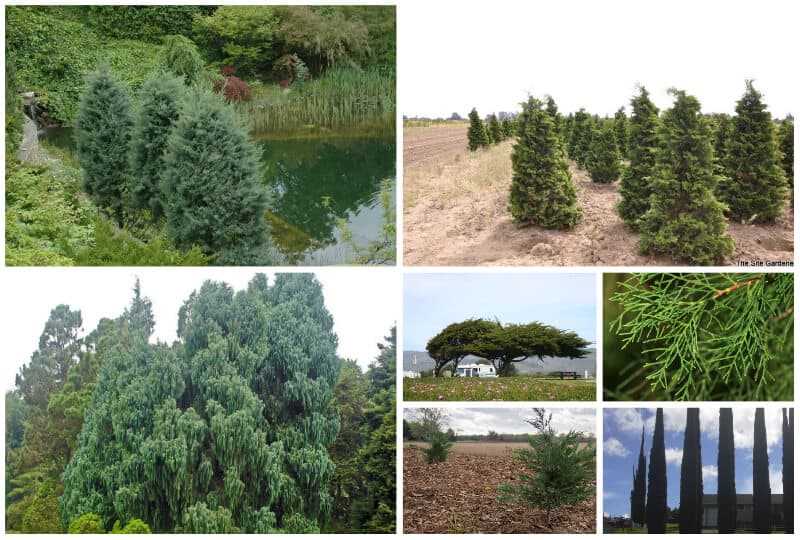
Cypress trees are considered fast-growing, with an average growth rate of 2 to 3 feet per year. However, some species, such as the Leyland cypress (x Cupressocyparis leylandii), can grow even faster, reaching up to 4 feet per year.
3. Height and Spread
The height and spread of cypress trees vary depending on the species and the available growing space. Some species, like the bald cypress (Taxodium distichum), can reach heights of 50 to 70 feet or more, while others, like the Monterey cypress (Cupressus macrocarpa), typically reach heights of 30 to 40 feet.
4. Root System
The root system of cypress trees is generally extensive and shallow. The roots spread horizontally near the soil surface to take advantage of oxygen and moisture. It is essential to provide adequate space for the root system to prevent issues with root competition and stability.
5. Pruning and Maintenance
Regular pruning is necessary to maintain the desired shape and size of cypress trees. Pruning should be done during the dormant season to minimize stress on the tree. It is recommended to remove any dead or diseased branches and to thin out crowded growth.
6. Disease and Pest Control
Cypress trees are generally resistant to most diseases and pests. However, they can be susceptible to certain issues, such as cypress canker, root rot, and spider mites. Regular inspection and proper preventive measures, such as maintaining good tree health and providing adequate water and nutrients, can help in preventing and managing these issues.
7. Lifespan
Cypress trees have a relatively long lifespan, with some species living for hundreds of years. However, the lifespan can vary depending on factors such as environmental conditions, proper care, and the presence of any diseases or pests.
8. Uses
Cypress trees have various uses, both ornamental and practical. They are commonly used as windbreaks, privacy screens, and landscaping trees. The wood of some cypress species, such as the bald cypress, is highly valued for its durability and resistance to decay, making it suitable for outdoor construction, furniture, and boat building.
| Species | Scientific Name | Growth Rate |
|---|---|---|
| Bald Cypress | Taxodium distichum | Medium |
| Monterey Cypress | Cupressus macrocarpa | Medium to fast |
| Leyland Cypress | x Cupressocyparis leylandii | Fast |
Propagating Cypress: Methods and Techniques
There are several methods and techniques to propagate cypress trees. These methods include seed propagation, cuttings, and grafting.
1. Seed Propagation
Seed propagation is the most common method to propagate cypress trees. Here are the steps:
- Collect ripe cones from a mature cypress tree.
- Allow the cones to dry and open naturally indoors.
- Extract the seeds from the cones.
- Prepare a seedbed with well-draining soil.
- Sow the cypress seeds evenly on the seedbed.
- Cover the seeds lightly with soil.
- Water the seedbed regularly to keep it moist.
- Wait for the seeds to germinate, which can take several weeks.
- Transplant the seedlings to individual pots or a nursery bed when they are large enough to handle.
2. Cuttings
Propagating cypress trees from cuttings is another common method. Here’s how to do it:
- Select a healthy branch from the parent cypress tree.
- Cut a 6- to 8-inch section of the branch just below a leaf node.
- Remove the leaves from the lower half of the cutting.
- Apply a rooting hormone to the cut end of the cutting.
- Insert the cutting into a pot filled with a well-draining rooting medium.
- Place the pot in a warm and humid environment.
- Keep the soil moist but not waterlogged.
- After a few weeks, the cutting should develop roots.
- Transplant the rooted cutting to a larger pot or a nursery bed.
3. Grafting
Grafting is a more advanced technique used to propagate specific cypress varieties. Here are the steps:
- Select a healthy rootstock cypress tree and a desired variety to be grafted.
- Cut a 1- to 2-year-old branch from the rootstock tree.
- Cut a matching-sized branch from the desired variety.
- Make a diagonal cut on both the rootstock and the variety branch.
- Align the two cut surfaces and bind them together with grafting tape.
- Leave the grafted tree in a warm and humid environment for several weeks.
- Monitor the graft union for successful healing.
By following these methods and techniques, you can successfully propagate cypress trees and expand your collection or contribute to reforestation efforts.
Popular Cypress Species
There are several popular species of cypress, each with its own unique characteristics and uses. Here are some of the most well-known cypress species:
- Italian Cypress (Cupressus sempervirens): This tall and slender tree is native to the Mediterranean region. It is commonly planted in landscapes as an ornamental tree due to its elegant columnar shape. Italian cypress is also used as a windbreak or privacy screen.
- Bald Cypress (Taxodium distichum): Native to North America, bald cypress is a deciduous conifer that is known for its distinctive buttress roots and ability to thrive in wet soils. It is often planted in parks and gardens for its attractive shape, fall color, and ability to tolerate flooding.
- Arizona Cypress (Cupressus arizonica): This species is native to the southwestern United States and northern Mexico. It is a drought-tolerant evergreen tree that is often used for windbreaks, erosion control, and as an ornamental tree in xeriscape gardens.
- Japanese Cypress (Chamaecyparis obtusa): Also known as Hinoki cypress, this species is native to Japan and is highly valued for its durable and fragrant wood. It is commonly used in traditional Japanese architecture, such as temples and shrines. Japanese cypress is also planted as an ornamental tree in gardens.
In addition to these popular species, there are many other cypress species that are grown and used for various purposes. Each species has its own unique characteristics, such as growth habit, foliage color, and wood properties, making them suitable for different applications.
Varieties of Cypress Trees
Cypress trees are a diverse group of evergreen conifers that belong to the Cupressaceae family. They are known for their tall, slender, and pyramid-like shape, as well as their ability to thrive in various environments. There are several different varieties of cypress trees, each with its own unique characteristics and features. Some of the most popular varieties include:
1. Leyland Cypress (Cupressus x leylandii)
The Leyland cypress is a hybrid between the Monterey cypress and the Nootka cypress. It is one of the most commonly planted cypress trees due to its fast growth rate and ability to create dense privacy screens. The Leyland cypress has feathery, blue-green foliage and can reach heights of up to 70 feet.
2. Arizona Cypress (Cupressus arizonica)
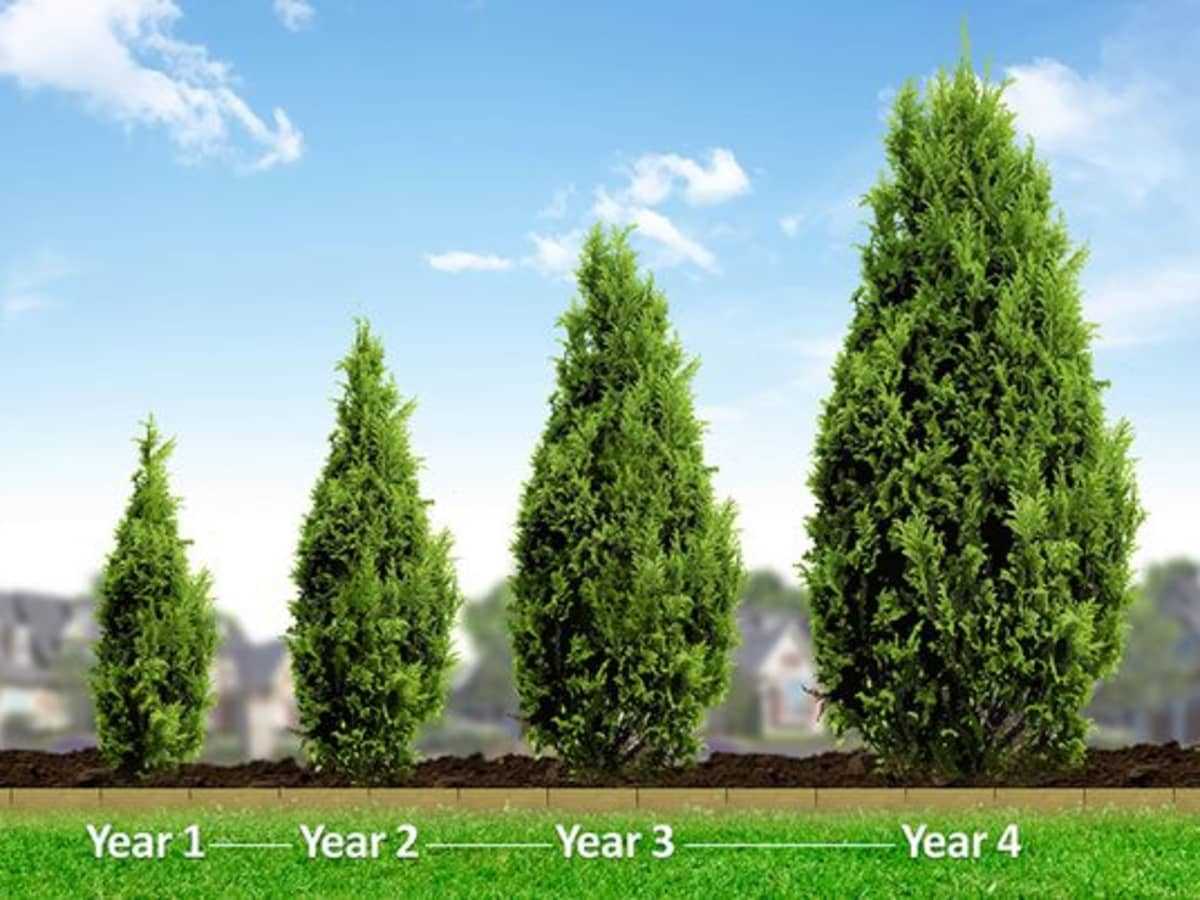
The Arizona cypress is a native to the southwestern United States and northern Mexico. It is known for its silver-blue foliage and striking conical shape. This variety is drought-tolerant and can grow up to 60 feet tall.
3. Italian Cypress (Cupressus sempervirens)
The Italian cypress is a tall, columnar tree that is commonly seen in Mediterranean landscapes. It features dark green foliage and can grow up to 60 feet in height. The Italian cypress is often used as a decorative tree for its elegant and statuesque appearance.
4. Bald Cypress (Taxodium distichum)
Unlike other cypress trees, the bald cypress is deciduous, meaning it loses its needles in the fall. It is native to the southeastern United States and is commonly found in swampy areas. The bald cypress has a unique buttressed trunk and can grow up to 120 feet tall.
5. Hinoki Cypress (Chamaecyparis obtusa)
The Hinoki cypress is a slow-growing evergreen tree native to Japan. It has dense foliage that ranges in color from dark green to golden or yellowish-green. The Hinoki cypress is often used in Japanese gardens and can grow up to 50 feet tall.
These are just a few examples of the many varieties of cypress trees available. Each variety has its own unique characteristics and benefits, making them a popular choice for landscaping and ornamental purposes.
Best Growing Conditions for Cypress
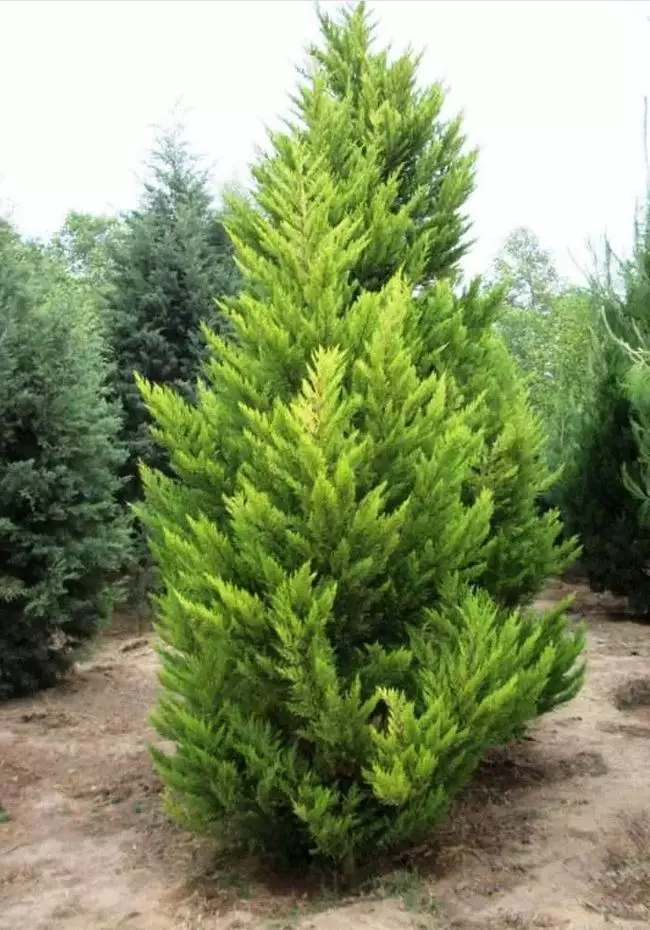
Climate:
- The ideal climate for cypress trees is a temperate one.
- They thrive in regions with mild winters and moderate summers.
- Ensure that the temperature does not drop below freezing point, as it can damage the tree.
- Cypress trees prefer moist climates, but they can also tolerate drought conditions if necessary.
Soil:
- Cypress trees prefer well-drained soil.
- They can tolerate a wide range of soil types, including sandy, loamy, or clayey soils.
- However, they thrive best in soil that is rich in organic matter.
- A slightly acidic to neutral pH level of 6.0 to 7.5 is ideal for cypress trees.
Sunlight:
- Cypress trees require full sun exposure to grow properly.
- They should receive at least 6 hours of direct sunlight each day.
- Insufficient sunlight can result in poor growth and weak branches.
Watering:
- Cypress trees have moderate water requirements.
- They should be watered regularly, especially during dry periods.
- Avoid overwatering, as it can lead to root rot.
- Proper drainage is essential to prevent waterlogged soil.
Fertilizer:
- Apply a balanced slow-release fertilizer during the growing season.
- Follow the instructions on the fertilizer packaging for the appropriate dosage.
- Avoid excessive use of fertilizer, as it can harm the tree.
Pruning:
- Prune cypress trees to maintain their shape and remove dead or damaged branches.
- Pruning should be done during the dormant season to minimize stress on the tree.
- Avoid heavy pruning, as cypress trees do not respond well to drastic pruning.
Pests and Diseases:
- Cypress trees are relatively resistant to pests and diseases.
- However, they can be susceptible to cypress canker, root rot, and certain insect infestations.
- Regular inspection and timely treatment can help prevent and manage these issues.
Other Considerations:
- Plant cypress trees in an area with sufficient space for their mature size.
- Consider the potential height and spread of the tree when selecting a planting location.
- Provide adequate protection from strong winds, as cypress trees can be vulnerable to wind damage.
By ensuring the best growing conditions for cypress trees, you can promote healthy growth and enjoy their beauty in your landscaping.
Caring for Cypress Trees: Tips and Guidelines
Cypress trees are known for their distinctive beauty and resilience. By providing the proper care and maintenance, you can ensure that your cypress trees thrive and continue to enhance your landscape for years to come. Here are some tips and guidelines to help you care for your cypress trees.
1. Watering
Cypress trees prefer moist soil but can tolerate short periods of drought once established. Water your cypress tree deeply and infrequently, allowing the soil to dry out slightly between waterings. Avoid overwatering, as this can lead to root rot and other issues.
2. Soil
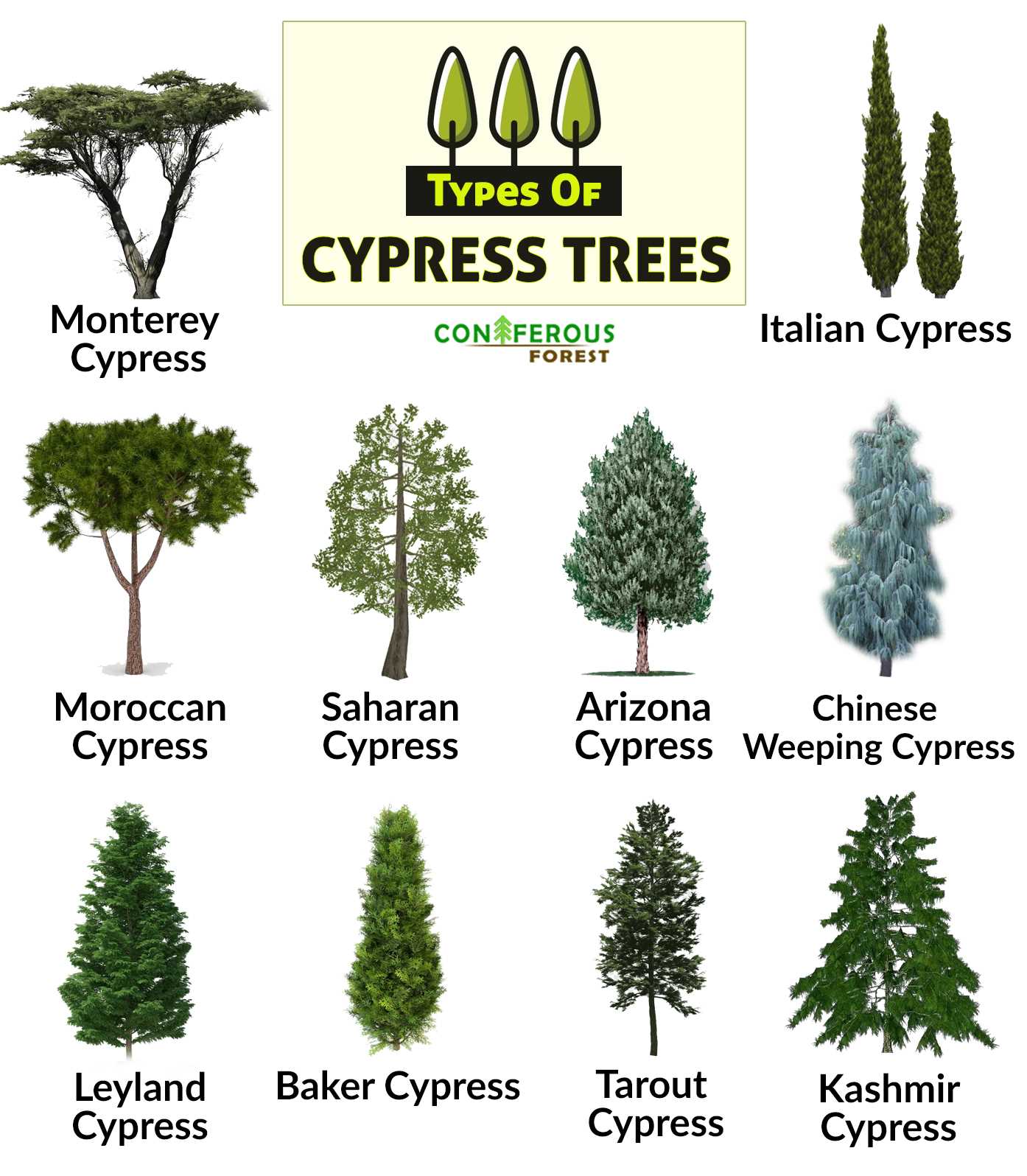
Cypress trees thrive in well-draining soil with a pH level between 5.0 and 7.0. If your soil is heavy or compacted, consider amending it with organic matter, such as compost or peat moss, to improve drainage. Avoid planting cypress trees in areas with consistently wet or waterlogged soil.
3. Fertilization
Apply a balanced, slow-release fertilizer specifically formulated for trees in early spring, just before new growth begins. Follow the manufacturer’s instructions for application rates, as excessive fertilizer can harm the tree. Avoid fertilizing late in the growing season, as it may interfere with the tree’s natural hardening off process.
4. Pruning
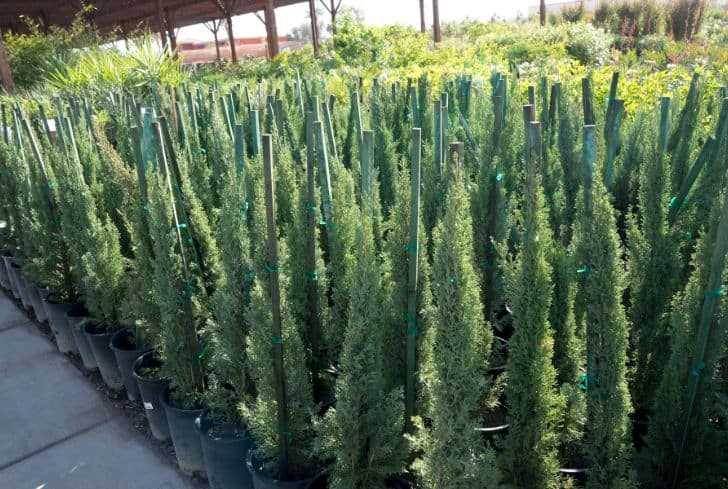
Regular pruning helps maintain the shape and health of your cypress tree. Prune dead, damaged, or diseased branches as soon as you notice them. You can also selectively prune to control the tree’s size and shape. Avoid heavy pruning, as this can weaken the tree and make it more susceptible to diseases.
5. Mulching
Applying a layer of organic mulch around the base of your cypress tree can help conserve moisture, suppress weed growth, and regulate soil temperature. Spread a 2 to 3-inch layer of mulch, such as wood chips or shredded bark, taking care to keep it a few inches away from the tree’s trunk to prevent moisture buildup and rot.
6. Protection
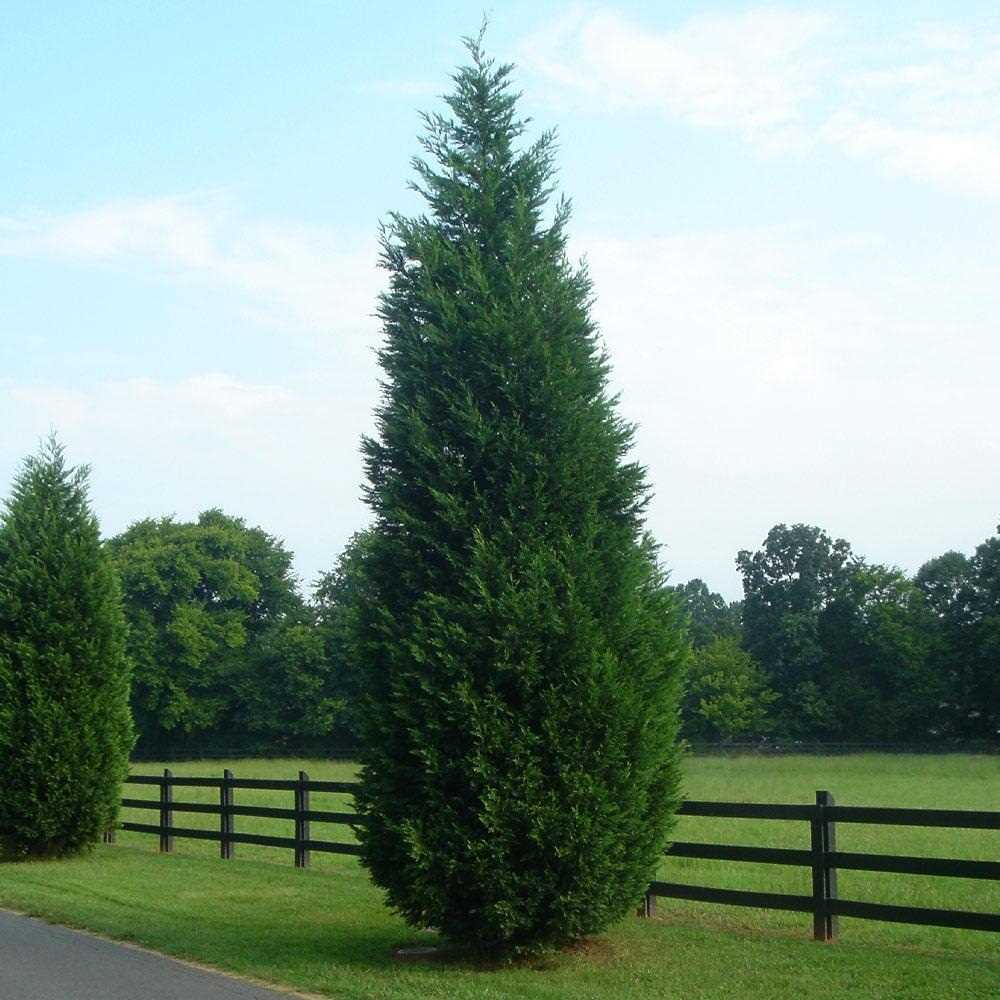
During extreme weather conditions, such as strong winds or heavy snowfall, cypress trees may be vulnerable to damage. Consider providing support, such as staking, to young or weak trees to prevent them from bending or breaking. Additionally, protecting the trees from excessive salt exposure can help prevent damage in coastal areas.
7. Disease and Pest Control
Cypress trees are generally resistant to many diseases and pests. However, they can still be susceptible to certain issues, such as canker diseases or spider mites. Monitoring your trees regularly and taking prompt action at the first sign of trouble can help prevent the spread of diseases and keep pests under control. Consult with a professional arborist or local garden center for appropriate treatments if needed.
By following these tips and guidelines, you can provide the proper care and attention that cypress trees require. Remember to observe your trees regularly, as early detection of any potential issues can help ensure the long-term health and vitality of your cypress trees.
Common Pests and Diseases Affecting Cypress Trees
Cypress trees are generally hardy and resistant to many pests and diseases, but they can still be affected by a few common issues. Understanding these pests and diseases can help you identify and treat the problems early, ensuring the health and longevity of your cypress trees.
Pests
- Cypress Tip Moth (Arpophyllum chatni): These moths lay their eggs at the tips of cypress branches. The larvae then bore into the branches, causing tip dieback and stunted growth. Pruning affected branches and applying insecticides can help control the cypress tip moth.
- Cypress Bark Beetles (Phloeosinus spp.): These small insects burrow into the bark of cypress trees, causing extensive damage. Symptoms include yellow or brown foliage, resinous oozing, and eventual tree death. Infested trees should be removed and destroyed to prevent further spread.
- Mites (Eotetranychus spp. and Oligonychus spp.): Mites are tiny arachnids that can infest cypress trees and cause discoloration, distortion, and defoliation. Regularly inspecting your trees and applying appropriate miticides can help control mite infestations.
- Cypress Weevils (Pissodes spp.): These weevils feed on the bark and foliage of cypress trees, causing significant damage. Symptoms include brown or black patches on the foliage and holes in the bark. Applying insecticides and maintaining good tree health can help manage cypress weevil populations.
Diseases
- Cypress Canker (Seiridium cardinale): This fungal disease affects cypress trees, causing branch dieback, resinous cankers, and eventually tree death. Pruning infected branches and applying fungicides can help control cypress canker, but severely infected trees may need to be removed.
- Cypress Rust (Cronartium spp.): This fungal disease affects both cypress trees and other host plants, causing orange or rust-colored pustules on the foliage. Pruning and destroying infected branches and plants, as well as applying fungicides, can help manage cypress rust.
- Root Rot (Phytophthora spp.): This soil-borne fungal infection can affect cypress trees and cause root decay, leading to stunted growth, yellowing foliage, and eventual tree death. Ensuring proper drainage and avoiding overwatering can help prevent root rot in cypress trees.
- Needle Blight (Lophodermium spp.): This fungal disease affects the needles of cypress trees, causing discoloration, needle drop, and reduced vitality. Pruning infected branches and applying fungicides can help manage needle blight in cypress trees.
| Pests | Diseases |
|---|---|
| Cypress Tip Moth | Cypress Canker |
| Cypress Bark Beetles | Cypress Rust |
| Mites | Root Rot |
| Cypress Weevils | Needle Blight |
Questions and Answers:
What is Cypress?
Cypress is a type of coniferous tree or shrub that belongs to the family Cupressaceae.
How tall does Cypress tree grow?
The height of a Cypress tree can vary depending on the species, but they can grow up to 70 feet tall.
What are some popular species of Cypress?
Some popular species of Cypress include the Bald Cypress, Italian Cypress, Leyland Cypress, and Monterey Cypress.
How can Cypress be propagated?
Cypress can be propagated through various methods such as seed propagation, cuttings, or grafting.
What are the ideal growing conditions for Cypress?
Cypress trees thrive in moist soil and require full sun exposure. They are also adaptable to a wide range of soil types.
Are there any special care tips for growing Cypress?
It is important to provide regular watering to young Cypress trees and to prune them to maintain their desired shape. They should also be protected from strong winds.
What are some popular varieties of Cypress?
Some popular varieties of Cypress include the Blue Ice Cypress, Goldcrest Cypress, and Hinoki Cypress.







